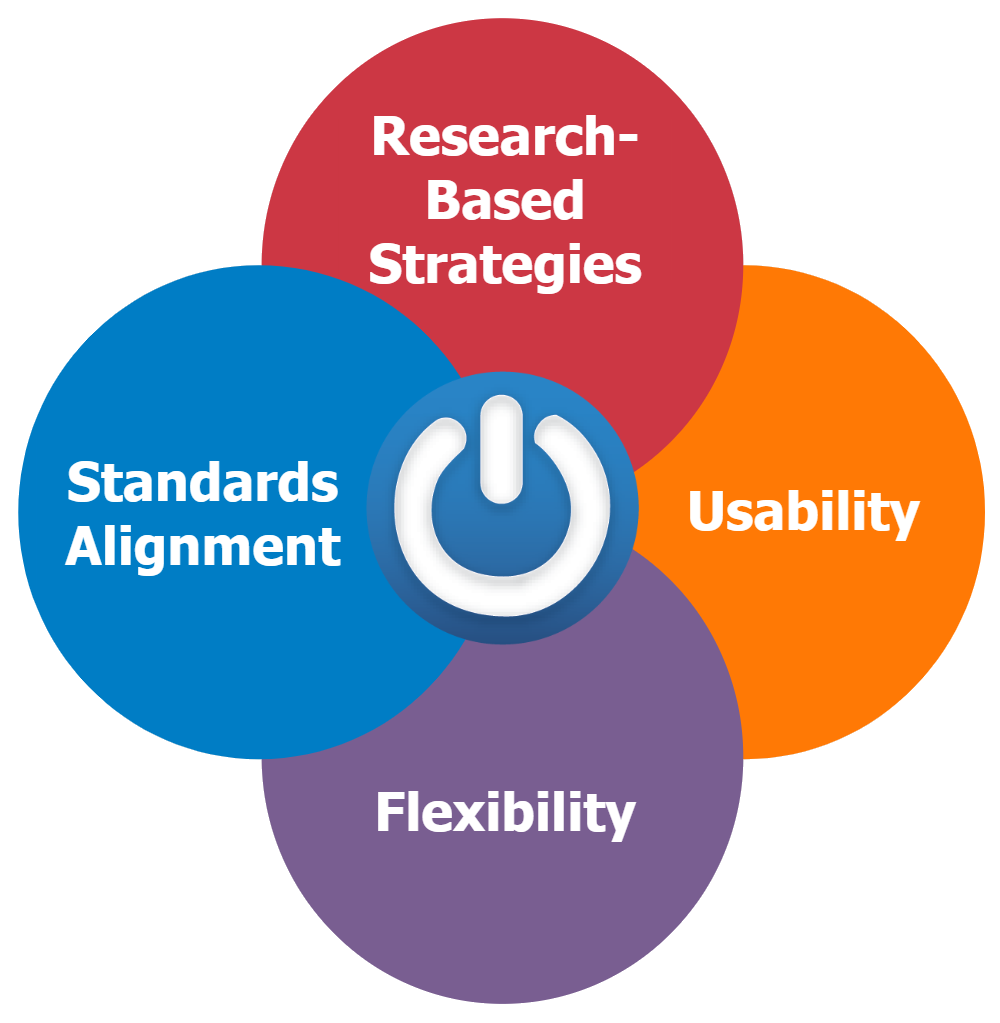Before searching for content, it is important to think about what separates high-quality instructional materials from the average. Why consider quality before searching? Consider these statistics:
In this lesson, we'll look at a number of lenses you can use to evaluate learning materials, as well as established quality assurance rubrics that will help you.
 The Instructional Materials Rubric from INFOhio is quality assurance tool that can help you evaluate supplemental content. It is composed of 14 standards across four categories. These are standards alignment, research-based strategies, usability, and flexibility.
The Instructional Materials Rubric from INFOhio is quality assurance tool that can help you evaluate supplemental content. It is composed of 14 standards across four categories. These are standards alignment, research-based strategies, usability, and flexibility.
The abbreviated, one-page version of the rubric features simple yes/no checkboxes. This allows for quick yet objective reviews of what is critical for learning. This version of the rubric was created to be an approachable evaluation tool, with potential uses by classroom teachers, librarians, instructional coaches, and administrators. Users can find this on page 1 of the Instructional Materials Rubric.
A more detailed version found on pages 2-4 of the Instructional Materials Rubric includes additional criteria which expand upon the standards. These are more finely detailed clarifying statements or possible evidence for a standard being present. The 48 total criteria are represented as bullets to allow users to check or circle one if a material meets expectations in that area.
The Instructional Materials Rubric was inspired by and includes elements from reputable sources like EdReports, Achieve.org, Ohio Department of Education (ODE) content-area rubrics, Quality Matters, Univeral Design for Learning (UDL) guidelines from CAST, and research on effective instructional materials and instruction.
INFOhio made several rounds of revisions to the rubric based on feedback from ODE and field educators who had used it as part of INFOhio's Instructional Materials Reviewer program.

Importantly, items appearing in Open Space have already achieved the standards in the Open Space Submission Rubric. Visit the Ohio Reviewed Instructional Materials hub to see educator-reviewed content that met expectations on the Instructional Materials Rubric.
Boser, U., Chingos, M., & Straus, C. (2015, October). The Hidden Value of Curriculum Reform: Do States and Districts Receive the Most Bang for Their Curriculum Buck? Center for American Progress. https://cdn.americanprogress.org/wp-content/uploads/2015/10/06111518/CurriculumMatters-report.pdf
The New Teacher Project (TNTP). (2018, September 25). The Opportunity Myth: What Students Can Show Us About How School Is Letting Them Down—and How to Fix It. https://tntp.org/publications/view/student-experiences/the-opportunity-myth
Fetch is avaiable to INFOhio automated schools. If you are an INFOhio school, please log in with your school username/password using the button at the top-left corner of this page.
For more information about Fetch, please visit the Fetch information page or contact INFOhio support at https://support.infohio.org.